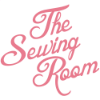This Blog post and video are kicking off a series I’m starting where I’ll talk with industry professionals about Jobs in Fashion. There are so many different kinds of jobs in the fashion industry and I thought it would be really interesting to dig into a few of these and let you know what these jobs are really like and how they can differ from one company to another.
I recently spoke with Actor, Model and Modeling Coach, Charleston Pierce about the different kinds of models in the fashion industry & highly recommend watching the video. Charleston is enthusiastic and engaging about modeling, his career and by the end, you’ll feel like a million bucks. He really is sooo encouraging. Below is a recap of what we talked about - Enjoy!
Print Modeling
Print modeling is what one might typically think about when they think about models. Print Models are people who pose for photographs either for advertising and/or editorial work. These models are showing off the beauty of the clothes, shoes, accessories etc., that they are wearing in the photo shoot. These photos may appear online or social media, but primarily the idea behind “Print” modeling is that they will end up in magazines. They might be shot in a studio setting like the photo above or in more of a “lifestyle” environment, but both are considered print modeling if the photos end up in a magazine. There is typically more “Print” work in bigger cities, like New York or Los Angeles, however one might get work as a print model for smaller companies and magazine on a local level.
Runway Modeling
Runway modeling is about modeling clothing , shoes or accessories in a fashion show. Fashion Shows can be formal, on an elevated runway, or informal, with a runway or not. Models are expected to be able to walk a certain way while wearing these pieces and embodying the look the designer is trying to convey for their fashion exhibition. Like Print modeling, Runway models get more work in bigger cities with more fashion industry like New York or Paris.
Fit Modeling
This kind of modeling is particularly useful for the Fashion Maker. Fit models try clothes on to show designers and merchandisers how the clothes fit them. They will walk around, squat, move their arms and communicate how the garment feels. They will tell you if it is too big, too little, too tight etc. and they usually know a bit about what the designer is looking for.
Professional fit models who work for a specific company on a regular basis, must maintain specific body measurements and have a fairly symmetrical body. But there are also fit models needed to try on different sizes so that companies can “check the fit” across a wide range of sizes and sometimes body types.
Lifestyle Modeling
This is the everybody model job. Lifestyle modeling is every day people doing everyday things with everyday stuff. It might be a scene in a bank or a person using a cleaning product, but the people are modeling primarily for advertising purposes. Apparently there is a lot of Lifestyle modeling in the San Franciso Bay Area.
Commercial Actor
I asked Charleston what the difference between a commercial actor and a model was. His response? An actor speaks and uses their voice. I found this really interesting. Charleston confirmed for me that modeling is often “Acting” without words. The Model expresses feeling or conveys an attitude with their body and face and does their own share of acting, but an Actor also uses their voice.
Tips for Working as a Model
Work hard and do your research. Find out about modeling in your area.
Be Professional. Modeling is a job after all.
Find a mentor or a coach - Someone you can trust, who knows the industry.
Modeling can be done with or without an agency. An agency can provide you with more opportunities but they do take a portion of your earnings.
If you are interested in learning more about modeling or working with Charleston. You can reach him at CharlestonPierce@gmail.com
Until Next Time, Be Well and Have Fun!
Jennifer






